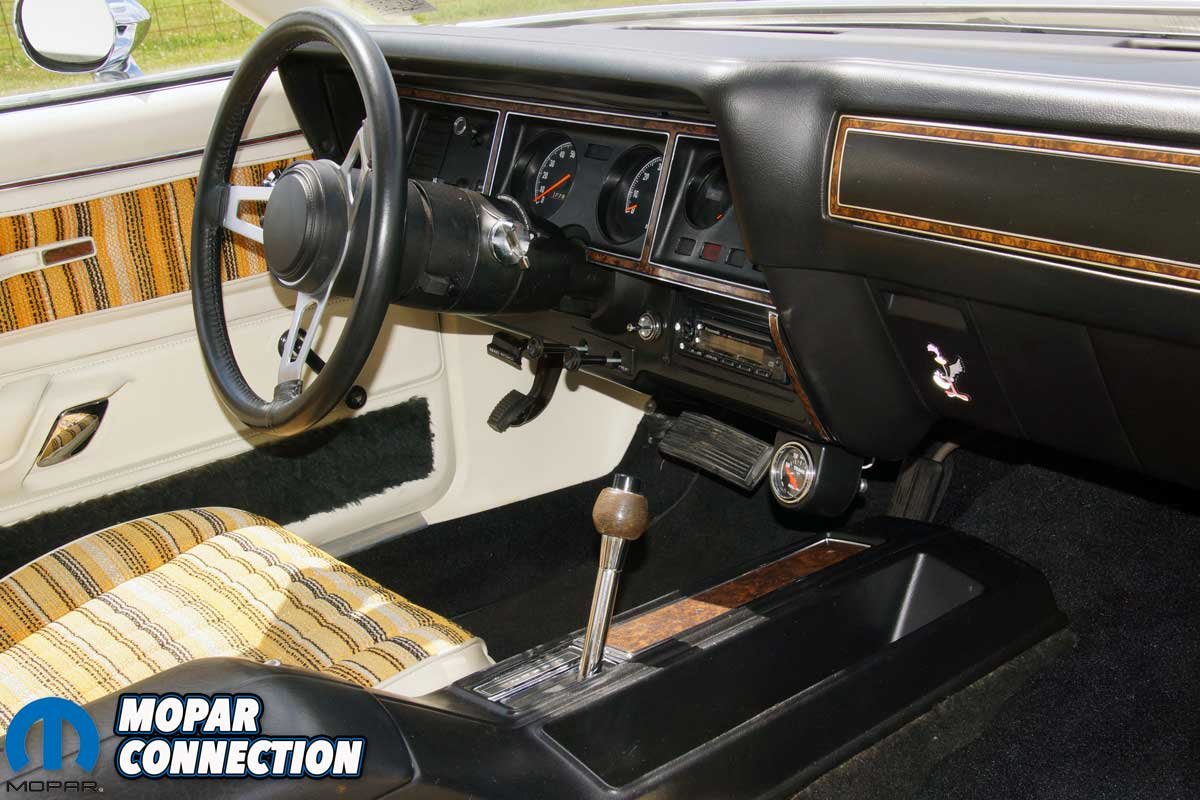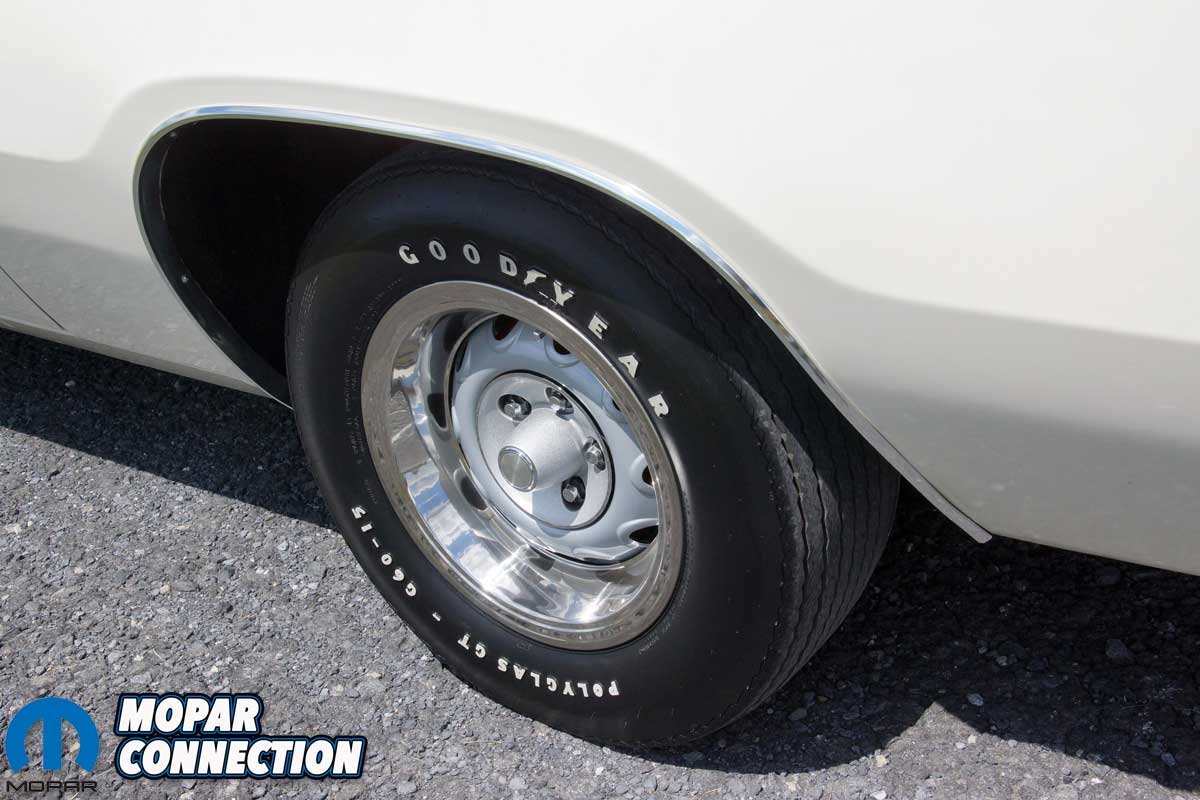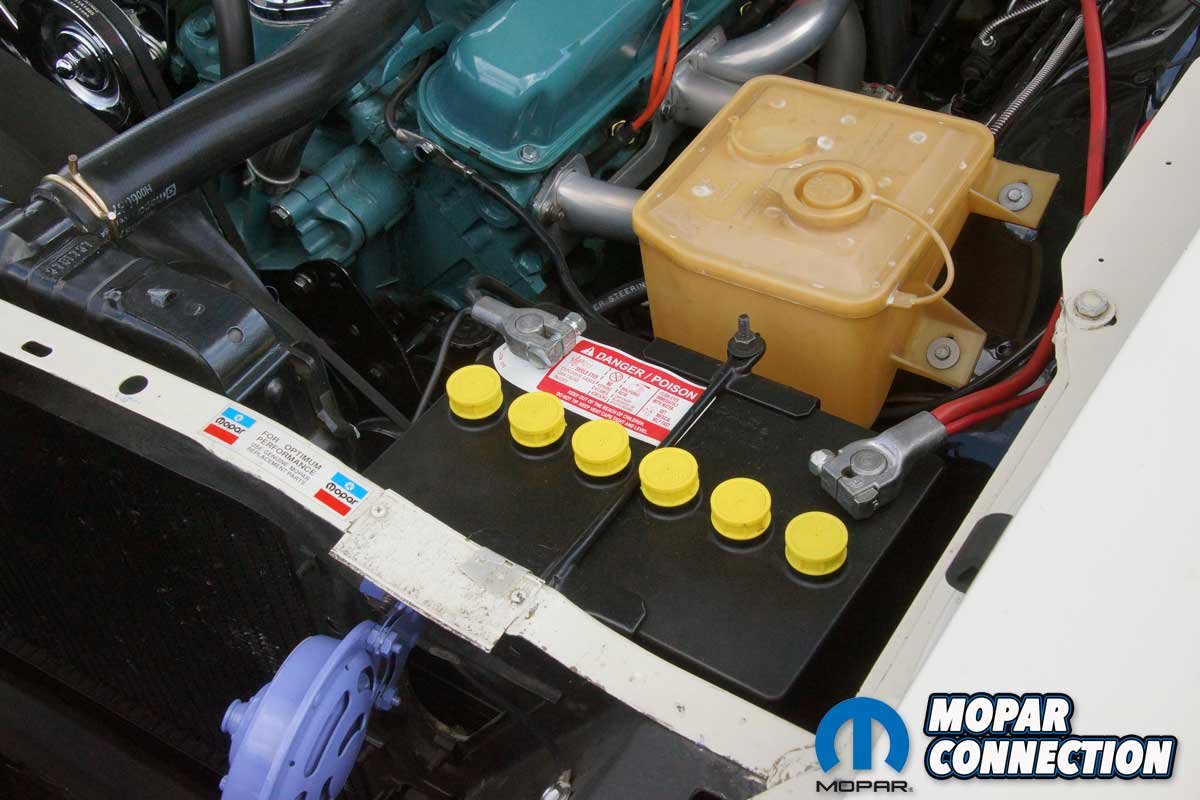
By 1975, the flame of the once red-hot Plymouth Road Runner had cooled to smoldering ashes due to cascading events, including the OPEC oil embargo in late-’73 into mid-‘74, increasing insurance premiums for young drivers with high-performance vehicles, and the ever-growing emissions requirements imposed by the federal government.
Long gone were the high-compression, big horsepower Hemis, 440s, 383s, and 340s, but a flicker of the flame remained with two 360 engine options (170 or 220hp) and three 400 engine options (160, 185, or 235hp). The 145hp 318 engine was standard, and the 255hp 440 remained an option, but only for police cars.
Except for the 318, the only transmission option was a three-speed Torqueflite automatic. The 904 came with the small blocks (318 or 360), and the 727 for the 400 or 440. A buyer could order a 318 with a Torqueflite or a three-speed manual transmission.
Upon its record-breaking inception in 1968, the Road Runner was an option on the Belvedere platform. In 1971, with the Belvedere model dropped from production, the Road Runner moved to the Satellite body, and then Plymouth shifted it to the Fury model in 1975, its final year as a B-body. Only 7,183 Road Runners were built in ‘75, and just over 50% were equipped with a 318. In 1976, the Road Runner name moved to the all-new, compact-size (later reclassified as an intermediate) F-body Volare, where it remained until 1980 but basically as a sticker package.
Unlike its late-60s predecessors, a buyer could order the ‘75 Road Runner with plush interiors, a rally instrument cluster (with a tachometer), power seats, and power windows. To differentiate the Road Runner from the other Furys, it came with a blacked-out grille, a special stripe treatment, and a heavy-duty suspension equipped with 0.98-inch front torsion bars and beefer rear springs along with front and rear sway bars. In addition, the Road Runner came with 14- or 15-inch Rallye wheel options.
The days of the 8 ¾- or 9 ¾-inch rear ends with 3.54:1 or 4.10:1 factory gears were gone. Instead, an 8 ¼-inch rear end filled with 3.21:1 gears was found under the 318- or 360-equipped Road Runner. The rest of the Fury line with a small block came with 2.45:1 gears standard. A 9 ¼-inch rear end with a 3.21:1 gear was standard with the 400 or 440.
In 1975, Car and Driver magazine drag-strip evaluated a 235hp 400 Road Runner. The Road Runner labored through the quarter mile in the low 16-second range. The emissions-burdened Road Runner lumbered from 0-60 mph in 8.1 seconds, and the top speed was 121 mph. While anemic by ‘60s standards, the acceleration numbers were on par with other manufacturers’ 1975 models.

In the fall of 1974, Dennis Strausser of Orangeville, PA, picked up a dealer sales brochure that included photos of the Sundance cloth and white vinyl interior. He was attracted to the interior and the white exterior with the gold stripes. So, in December 1974, Dennis made a down payment and ordered a spinnaker white Road Runner with gold stripes and the Sundance cloth interior from the Bloomsburg Garage Co. in Bloomsburg, Pennsylvania.
The Road Runner was built on 12/12/74, but due to the Christmas holiday, Bloomsburg Garage Co. did not receive the Road Runner until January 1975. Upon delivery of his Road Runner, Dennis paid off the remainder of the just over $5000 price tag and took ownership of his first new car. The Road Runner he ordered came equipped with a two-barrel 360, a console-shifted 904 Torqueflite, and an 8 ¼-inch rear end with 3.21s.
Additional options included a rear window defogger, undercoating, side and roof tape, a trunk lid “tunnel” decal, and power steering. The interior had bucket seats in Sundance cloth and white vinyl trim, an AM/FM radio, the Light Package, and a Tuff Wheel. Dennis ordered the Road Runner with 15×7-inch Rallye wheels with front F60-15 and rear G60-15 Goodyear Polyglas GT tires.
Dennis used the Road Runner as a daily driver and a weekend cruiser. During this time, Dennis upgraded the Road Runner with a four-barrel carburetor and manifold, and he ran it at Numidia Dragway in Numidia, Pennsylvania. With 4.10:1 gears replacing the 3.21s, the well-tuned Road Runner ran in the 14.50s at 95 mph, easily eclipsing the Car and Driver magazine results.
One weekend evening in the summer of 1976, while driving her mother home, a young lady named Ellen noticed Dennis and the Road Runner. Ellen pointed out the Road Runner to her mother, and as she gestured, Dennis noticed her. After dropping her mother at home, Ellen stated she would take a little drive. She was soon back where she saw the Road Runner. Just minutes later, Dennis flagged down Ellen in her Firebird.
After their impromptu meeting, the Road Runner became a focal point in their courtship. Ellen used the Road Runner to drive her bride’s maids to be fitted for their gowns. Dennis and Ellen were married in December of 1976, and the Road Runner was the mode of transportation during the honeymoon. On the second day of the honeymoon, the Road Runner had to navigate through a couple of inches of snow, one of the few times it encountered the white stuff. A few years later, Dennis and Ellen brought their daughter home from the hospital in the Road Runner.
In 1978, Dennis and Ellen built their house. The home had a good-sized garage, which allowed the storage of the Road Runner out of the elements. Over time, the Road Runner relinquished its daily driver status and became a nice-weather car show and cruise-night ride.
With the exceptions of the carburetor, the installation of a pair of headers and a complete dual exhaust, the addition of chrome touches in the engine bay, and an aftermarket AM radio, the 77,000-mile Road Runner still wears the original interior, stripes, and paint. Likewise, the factory-installed engine, transmission, and rear end (3.21s reinstalled) remain stock.
Dennis took impeccable care of the Road Runner. While the mechanical parts could be easily found if any driveline component had required replacement or rebuilding, the ultra-rare decals, stripes, and interior pieces of the one-year-only Road Runner would be nearly impossible to replace.
After 47 years of ownership, Dennis has only two options he would consider ordering if he could do it again. The first would be air conditioning, and the second option may have been power-assisted brakes. Regardless of those additional options, the Road Runner Dennis ordered fell within his budget and served him well over the years.

Dennis and Ellen are a mainstay at the Carlisle Chrysler Nationals in Carlisle, Pennsylvania. Each year their ’75 Road Runner is one of two on the property, and often it is the only one. To put that into perspective, the 2022 Carlisle vehicle car count was 3,101. If you get a chance to observe the Road Runner in person, take the time to look it over. It is impressive how well the paint, stripes, decals, and interior have held up through the years. The unrestored Road Runner is a gem of a rare single-year-only vehicle.




















































I had a 71 Charger R/T w/a 440, 2 friends had 383 Roadrunners, all around 1978-1982. We used to talk bad about the 400 engines, because in stock form, they were boat anchors compared to our older big blocks. We couldn’t know then that the 400 blocks would be the BEST factory block for strength to be a stroker motor.
Imagine a 500-600 HP/Torque stroked 400 BACK THEN in a 75 Roadrunner with an upgraded rear axle, etc!
Cool!
Besides the fact that this car was preserved with it’s owner care the horn and sticker name is the only thing remaining of a cool car. sad , so sad. It is nice to see someone kept one alive for the rest of us to see and think oh yeh they did that back then.
“Dennis ordered the Road Runner with 15×7-inch Rallye wheels with front F60-15 and rear G60-15 Goodyear Polyglas GT tires…” Not only was that not possible, the trunk lid clearly shows “G70x14”.
It’s a nice hot rod, but don’t present it as “preserved”… there are too many other obvious modifications.